Artificial Intelligence (AI) has revolutionized the way we work. It’s changing industries, boosting productivity, and creating new opportunities.
But with great power comes great responsibility.
We must learn to use AI cautiously and effectively in professional settings.
Let’s explore the benefits, best practices, and tools for integrating AI into your work routine.
Key Takeaways
- AI boosts efficiency and creativity across industries like healthcare, construction, finance, and retail, but responsible use is essential to avoid ethical and security risks.
- Organizations must integrate AI with transparency and oversight—following frameworks like the EU’s data protection guidelines and Google’s E-E-A-T standards to ensure fairness, privacy, and credibility.
- Maintain a human-in-the-loop approach by pairing automation with human judgment, especially in sensitive sectors where accuracy and ethics are critical.
- For teams using AI in writing or content creation, tools like Undetectable AI’s Writing Style Replicator, AI Detector, and AI Humanizer ensure tone consistency, authenticity, and compliance with workplace standards.
- Combining detection, humanization, and continuous review helps professionals use AI productively while preserving trust, originality, and a human touch in all communications.
Benefits of AI in Professional Settings
AI is driving efficiency, sparking innovation, and making us more creative. Let’s explore AI’s impact in key sectors.
Healthcare
AI is working alongside clinicians to improve patient care.
According to recent industry reports AI is expected to boost health outcomes significantly — and it will also streamline service delivery in healthcare.


Never Worry About AI Detecting Your Texts Again. Undetectable AI Can Help You:
- Make your AI assisted writing appear human-like.
- Bypass all major AI detection tools with just one click.
- Use AI safely and confidently in school and work.
Construction
AI-driven improvements in project management and safety protocols help predict risks and optimize resources by analyzing data and forecasting issues in real-time.
It’s reducing delays and managing costs better. AI-powered robots and drones are taking on hazardous tasks.
They’re making construction sites safer for workers.
Retail
Retail businesses can understand consumer behavior better and manage supply chains more efficiently with AI tools.
Shops use it to personalize shopping experiences.
They’re anticipating trends and boosting customer satisfaction. AI’s streamlining operations in retail.
An example of AI enhancing retail is the Mira AI shopping assistant.
This tool helps e-commerce businesses automate customer support and improve sales by offering personalized recommendations and handling up to 80% of queries.
Manufacturing
AI-powered predictive maintenance is a game-changer. It minimizes downtime by forecasting equipment failures.
Manufacturing processes are becoming more precise and efficient. Companies are reducing costs and improving product quality.
Finance and Banking
Banks are embracing AI, especially since the COVID-19 pandemic. About 80% of banks recognize AI’s potential benefits, focusing on digital transformation.
It’s accelerating the development of secure, user-friendly digital banking services and making banking more accessible for customers.
Partnering with a fintech software development company can help integrate AI-powered features that support this shift.
How to Properly Use AI

As mentioned previously, AI has been a transformative force across various industries. The main goal is to drive efficiency and innovation.
However, users must ensure its deployment is ethical and aligned with organizational goals.
Proper usage requires adherence to established guidelines and a balanced human approach.
Below, we’ll try to understand detailed strategies for integrating AI tools responsibly.
Guidelines for Integrating AI Tools Responsibly
AI is incredibly powerful and can perform some tasks better than people.
But we have to remember AI’s current limitations and recognize that, for now, it is just very sophisticated pattern recognition.
At the end of the day, people build AI, and it’s incumbent upon us to think about the system’s risks.
How are we building it in a way that empowers people rather than replaces them?
Everybody involved with AI products, whether they’re building them, deploying them, or using them, has a responsibility to make sure that they’re operating in an ethical way.
For users, that means taking a step back and asking:
- What is the intended use of this system?
- Do I know how to properly use it?
- Do I know the limitations?
- Do I know the assumptions embedded within it?
It’s their duty to dig in and make sure they know those things before they begin using it.
They need to be willing to ask questions if the outputs don’t seem to make sense.
It’s in businesses’ interest to earn society’s trust because they want to maintain the ability to continue to use and deploy AI in their business practices.
We talk a lot about the need for trust in AI and the need to build a social license.
A social license means that while companies have the legal right to operate AI, they need the express approval of their customers, employees, and society to continue developing new products.
If they don’t have it, they’ll find that customers go away, and employees don’t want to work there.
In some cases, we’ve even seen litigation brought against companies.
So, to continue to operate AI and have the competitive advantage it brings, they need to earn that social license and trust.
When done properly and responsibly, AI impacts the world in a positive way.
In fact, the European Union (EU) has issued guidelines emphasizing the need for developers and users to safeguard personal data.
The EU Parliament advises that citizens should retain full control over their data, and it should never be used in ways that harm or discriminate against them.
To comply with these regulations, businesses must implement encryption, anonymization, and access control measures to ensure that personal data is securely managed throughout its lifecycle.
Balancing Automation with Human Oversight
Despite AI’s significant advantages in automating complex tasks, it is essential to maintain a balance between machine-driven processes and human oversight.
Human involvement is still needed in areas where ethical considerations are paramount or where the consequences of errors are severe.
One approach is the implementation of a human-in-the-loop (HITL) model, where both systems work alongside human experts.
This model performs the initial analysis or generates recommendations. However, a human operator reviews the results and makes the final decision.
An approach like this ensures that human judgment remains central to decision-making processes, particularly in high-stakes sectors such as healthcare, finance, and legal services.
The content creation industry presents a unique challenge here as well.
Many content writers have increasingly relied on AI tools to generate articles with minimal to no human intervention.
This trend has raised concerns about the quality and credibility of AI-generated content.
To address these concerns, Google introduced the E-E-A-T framework, which stands for Experience, Expertise, Authoritativeness, and Trustworthiness.
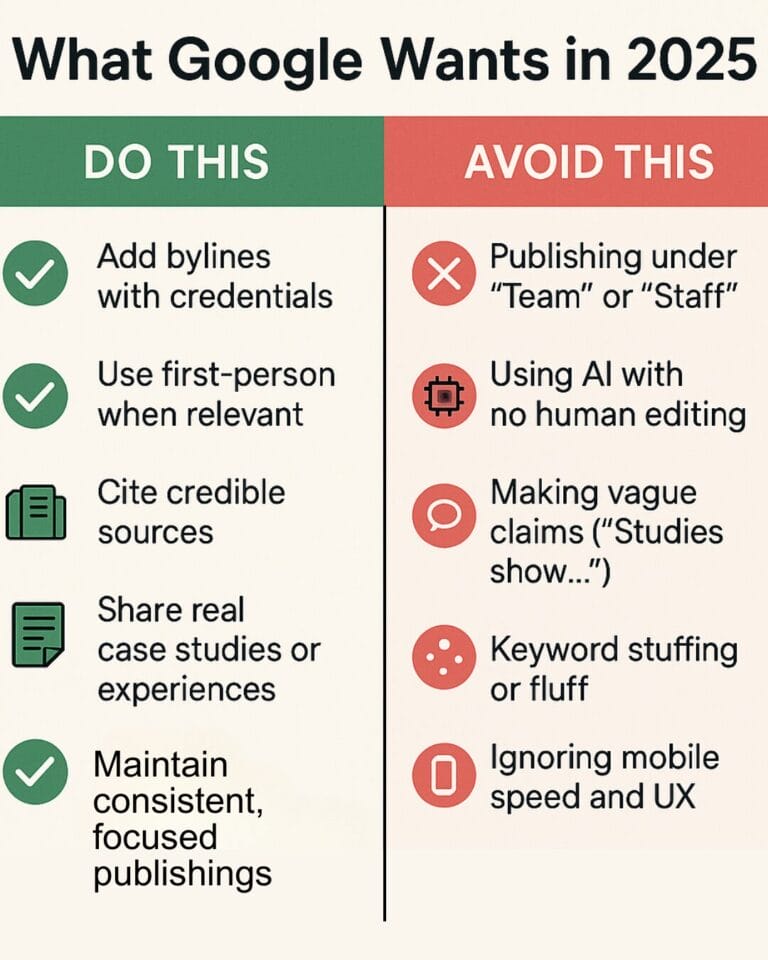
This framework evaluates the quality of content, with a preference for articles that demonstrate human expertise and credibility.
In essence, while it can assist in content generation, Google’s E-E-A-T framework encourages a model where human input and oversight play a critical role in producing high-quality, reliable content.
Regular auditing of systems is also necessary to detect and mitigate any biases that may emerge over time.
This includes ongoing assessments of algorithms to ensure they operate fairly and without unintended discriminatory effects.
The presence of human oversight in these processes serves as a safeguard against potential ethical violations.
It keeps AI’s technological enhancements in check rather than undermine organizational values and societal norms.
In sectors like finance, where AI-driven decisions can affect large populations, such oversight is not only a best practice but a critical necessity.
For professionals who want to maintain a consistent voice across AI-assisted writing, the Undetectable AI’s Writing Style Replicator helps match tone and style so your content still reflects your authentic expertise.
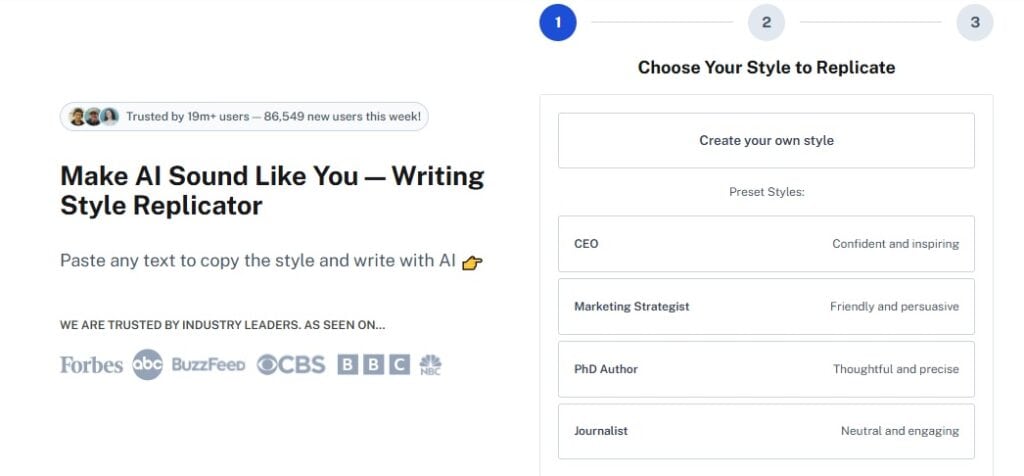
Practical Tips for Using AI at Work
AI’s influence in the workplace is undeniable, but effectively using it requires a thoughtful approach.
Below are some practical tips to help you integrate AI into your work processes.
Identifying Tasks and Processes Where AI Can Be Most Effective
AI’s effectiveness wanes as tasks become more complex but shines with repetitive, low-creativity functions.
Here are some ways to identify which processes can be improved with AI.
1. Start with Routine Tasks
Identify tasks that are repetitive and time-consuming.
For instance, data entry, scheduling, or responding to common customer queries are ideal candidates for automation.
Implementing in these areas can free up valuable time for employees to focus on more complex tasks.
For instance, data entry, scheduling, or responding to common customer queries are ideal candidates for automation.
Many teams also bring in a virtual healthcare assistant from a trusted company like Virtual Latinos to own these routine tasks—freeing up others to focus on higher‑value work.
2. Analyze Decision-Making Needs
Look at areas that require rapid, data-driven decisions.
AI excels at analyzing vast amounts of information quickly, making it perfect for scenarios like real-time inventory management or financial forecasting.
The ability to process and react swiftly can give your organization a competitive edge.
3. Consider High-Volume Data Processing
It can handle and analyze large datasets more efficiently than humans.
In marketing, for example, AI can segment audiences based on behavior patterns and deliver personalized content.
This level of precision enhances customer engagement and drives better results.
4. Focus on Precision Tasks
In fields like healthcare, it can assist in diagnostic imaging by identifying patterns the human eye may miss.
Similarly, in manufacturing, AI can monitor machinery for early signs of wear and tear, reducing downtime and maintenance costs.
Ensuring Data Security and Privacy While Using AI
As with any new tool integrated into your workflow, data security is critical.
Here are some tips to stay safe and keep your information out of the wrong hands.
1. Implement Strong Encryption
Data encryption is crucial in safeguarding information.
Encrypt data both in transit and at rest to prevent unauthorized access.
Strong encryption protocols ensure that even if data is intercepted, it remains unreadable and secure.
2. Establish Access Controls
Limit data access to authorized personnel only. Implement role-based access control (RBAC) to ensure that employees can only access the data necessary for their role.
This minimizes the risk of internal breaches and maintains data integrity.
3. Regular Security Audits
Conduct frequent security audits to identify potential vulnerabilities in your systems.
Regularly updating and patching AI software helps prevent breaches.
Audits also ensure that your tools comply with the latest security standards and best practices.
4. Anonymize Sensitive Data
Use data anonymization techniques to protect personal and sensitive information. You can also explore identity theft protection services to safeguard against personal data misuse or exposure.
By removing or masking identifiable details, you reduce the risk of data misuse.
Anonymized data can still be useful for analysis without compromising privacy.
5. Train Employees on AI Security
Educate your team on the importance of data security when using tools. Provide training on how to handle data securely and recognize potential security threats.
An informed team is your first line of defense against data breaches.
Bonus Tip – Checklist for AI Integration
- Define Clear Objectives: What do you want to achieve with AI?
- Evaluate Data Quality: Is your data clean and reliable?
- Select the Right Tools: Are you using AI tools that fit your specific needs?
- Monitor and Adjust: Are you regularly assessing AI performance and making necessary adjustments?
- Ensure Compliance: Are your AI practices aligned with legal and ethical standards?
Tools for Detecting and Humanizing AI Content
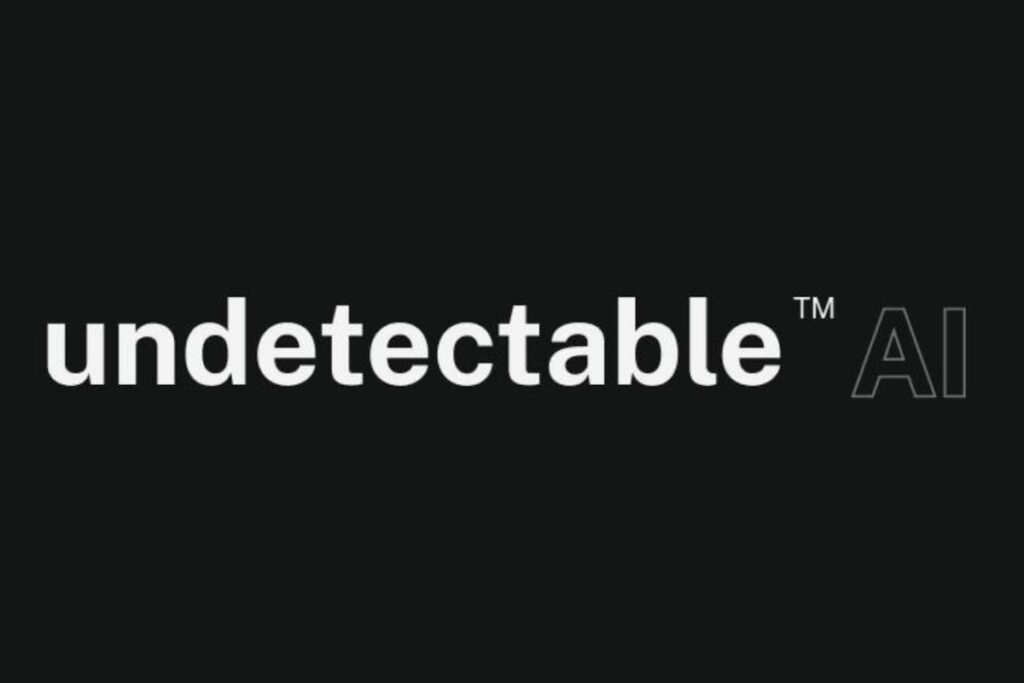
At times, you may want to check your work or that of others to see if it was generated by AI.
Some workplaces have strict no-AI rules or general guidelines that require more human influence.
Here are some tools you can use to detect AI content and even give it a boost of humanity.
Undetectable AI’s AI Detection Tool
Undetectable AI’s AI Detection Tool uses advanced algorithms to analyze text and identify patterns indicative of AI-generated content.
By examining aspects such as sentence structure, vocabulary usage, and contextual consistency, the tool can detect whether the text was produced by an AI model.
Key Features:
- Pattern Recognition: The tool detects common AI writing patterns, such as repetitive phrasing or unnatural transitions, which are often absent in human writing.
- Linguistic Analysis: It evaluates the text for anomalies in grammar and style that may suggest an AI origin.
- Real-Time Detection: The tool provides instant feedback, allowing users to quickly determine if a piece of content is AI-generated.
Undetectable is particularly useful for content editors, publishers, and educators who need to verify the authenticity of written materials.
It helps in maintaining content integrity and ensuring that submissions meet required standards.
Undetectable AI’s AI Humanizer
The AI Humanizer modifies AI-generated text to make it sound more natural and human-like.
It employs techniques such as adjusting sentence structure, adding colloquialisms, and incorporating nuanced expressions to enhance readability and relatability.
With the Undetectable AI’s AI Humanizer tool, users can instantly transform AI-written content into text that feels authentic and aligned with real human communication.
Key Features
- Content Refinement: Transforms mechanical or overly formal language into a more conversational tone.
- Contextual Adjustments: Tailors the content to fit specific contexts, making it more appropriate for various audiences and purposes.
- Engagement Enhancements: Adds elements like anecdotes, rhetorical questions, and personal touches to increase reader engagement.
It’s valuable for marketers, writers, and businesses that use AI to generate content but need it to resonate with human readers.
By humanizing AI-generated text, users can improve engagement and authenticity in their communications.
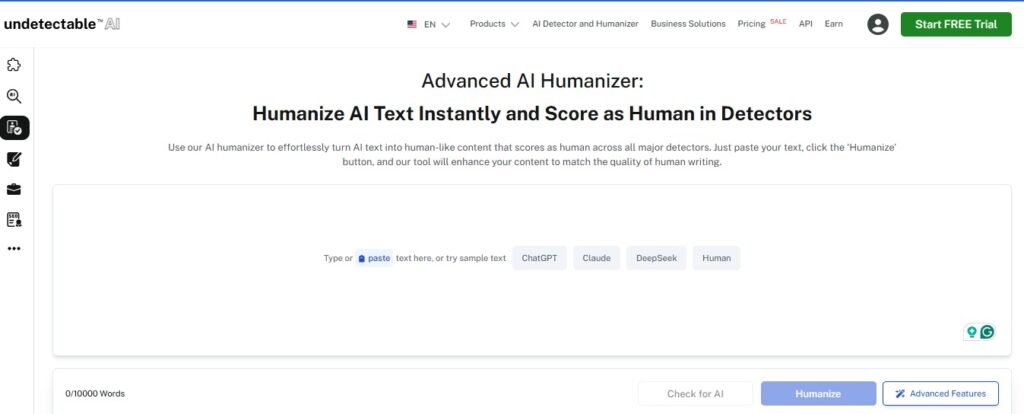
As teams begin relying on AI for multimedia content, it becomes just as important to verify the authenticity of audio as it is to review written text.
This is where our Undetectable AI’s AI Voice Detector can support your workflow.
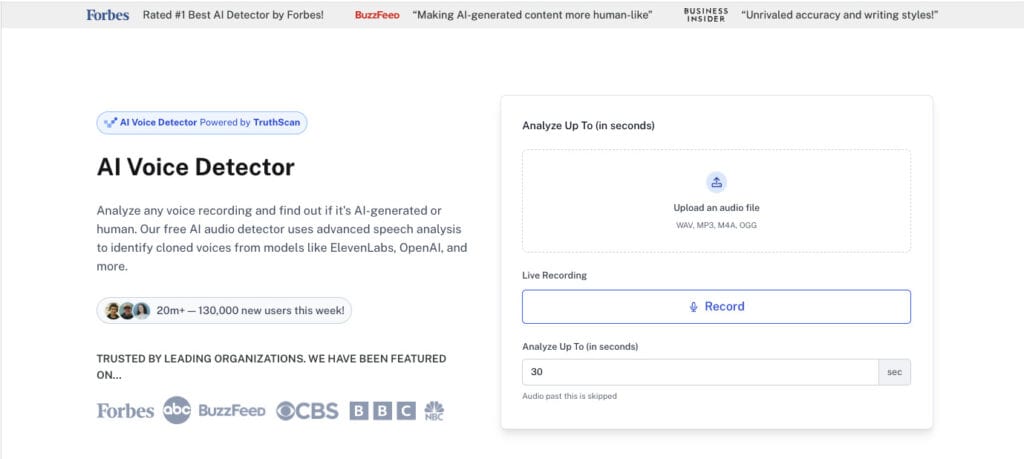
The tool analyzes uploaded voice recordings and highlights signals that may indicate synthetic or cloned speech, giving you a clear way to confirm whether an audio clip is genuine.
It is especially helpful for workplaces that handle interviews, voiceovers, training materials, or any content where trust and accuracy matter.
Best Practices for Using These Tools
- Combine Detection with Human Oversight: Use the AI Detection Tool in conjunction with human review to ensure comprehensive verification of content authenticity.
- Iterate and Refine: Regularly refine the output of the AI Humanizer to align with evolving communication standards and audience preferences.
- Stay Updated: Keep both tools updated to handle advancements in AI writing technologies and detection techniques.
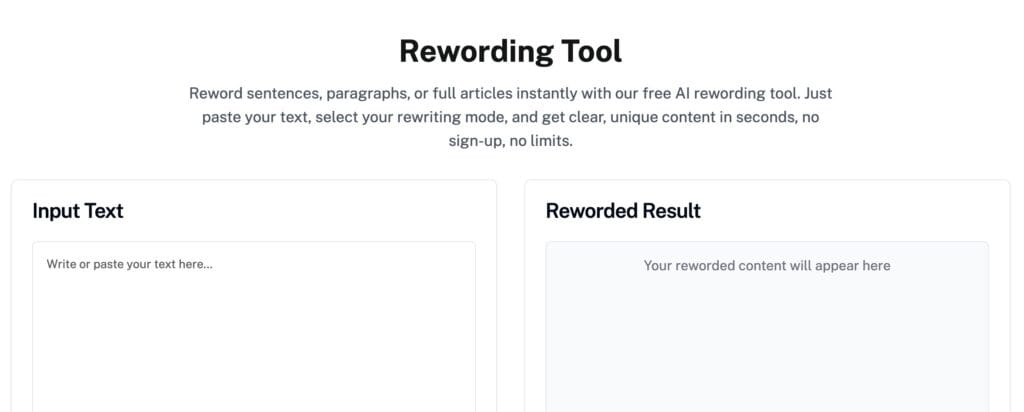
You can also use Undetectable AI’s Rewording Tool to refine awkward or unclear phrasing during review, making the final version smoother and easier for readers to understand.
Check your content using our AI Detector and Humanizer below!
Conclusion
Incorporating AI detection and humanization tools is essential for maintaining content quality and authenticity.
By leveraging Undetectable AI’s AI Detection Tool, you can confidently identify AI-generated text, ensuring integrity across your content.
Meanwhile, the AI Humanizer helps bridge the gap between mechanical and engaging writing, making your content resonate more with readers.
Balancing these tools allows you to harness AI’s efficiency while preserving the human touch, ultimately enhancing the credibility and impact of your communications.
For stronger, more authentic writing, try Undetectable AI.
